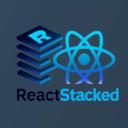
Streamline React With React Query In 2025
Master react query in 2025 to simplify data fetching and state management in react apps. learn its benefits, setup, and best practices.

Introduction
React Query is a leading trend in the React ecosystem for 2025, transforming how developers handle server-side data in web applications. By streamlining data fetching, caching, and synchronization, React Query reduces complexity and boosts performance, making it a favorite for building dynamic apps. This blog dives deep into React Query, exploring its features, benefits, setup, and practical tips for React projects in 2025. Let’s streamline your React apps with React Query.
What Is React Query?
React Query is a powerful library for managing server-state in React, handling tasks like API calls, caching, and data synchronization with minimal boilerplate. Unlike traditional state management tools, it focuses on asynchronous data, providing built-in support for loading states, error handling, and optimistic updates. Compatible with React 19, React Query is ideal for apps requiring real-time data, such as dashboards or social platforms.
Core Features
- Automatic Caching: Stores API responses for instant reuse.
- Declarative Queries: Simplifies data fetching with hooks.
- Real-Time Updates: Syncs data with server changes.
React Query is redefining data management in React apps for 2025.
Why React Query Is Trending in 2025
In 2025, React Query is trending due to its ability to address common pain points in data-heavy React apps: redundant API calls, complex state logic, and poor performance. Its integration with modern React features like Server Components and hooks makes it a go-to for developers building scalable, user-friendly applications for industries like finance, e-commerce, and media.
Key Benefits
- Efficiency: Reduces API requests with smart caching.
- Simplicity: Eliminates boilerplate for loading and error states.
- Flexibility: Works with REST, GraphQL, or WebSocket APIs.
React Query’s popularity is soaring as developers prioritize performance and ease.
Top Use Cases for React Query
React Query excels in scenarios where server data drives the user experience. Here are the top use cases fueling its adoption in 2025:
1. Real-Time Dashboards
- Fetches and syncs data for analytics or monitoring tools.
- Handles frequent updates without performance hits.
2. E-Commerce Platforms
- Powers product listings with cached, fast-loading data.
- Supports optimistic updates for cart or wishlist actions.
3. Social Media Apps
- Manages feeds, comments, and likes with real-time syncing.
- Simplifies pagination and infinite scrolling.
These use cases highlight React Query’s versatility in React applications.
How to Implement React Query in 2025
Getting started with React Query in a React project is straightforward, with excellent documentation and TypeScript support. Here’s a step-by-step guide to integrate React Query in 2025:
Steps to Use React Query
- Install React Query: Run
npm install @tanstack/react-queryoryarn add @tanstack/react-query. - Set Up Query Client: Initialize a
QueryClientand wrap your app withQueryClientProvider. - Create Queries: Use the
useQueryhook to fetch data with a unique key and fetch function. - Handle Mutations: Use
useMutationfor updates like POST or PUT requests. - Optimize with Devtools: Add React Query Devtools for debugging queries in development.
Practical Tips
- Leverage Caching: Set
staleTimeandcacheTimeto balance freshness and performance. - Use TypeScript: Define query types for safer, maintainable code.
- Combine with Server Components: Fetch data server-side in Next.js for SEO benefits.
These steps will help you harness React Query for efficient React apps.
Challenges and Solutions
React Query is powerful but can present challenges for newcomers. Here’s how to tackle them:
Challenge: Managing Cache Complexity
- Solution: Use query keys effectively to organize cached data.
- Tip: Group related queries with array-based keys for clarity.
Challenge: Learning Curve for Mutations
- Solution: Start with simple mutations and study optimistic update examples.
- Tip: Use React Query’s mutation hooks with error boundaries for robustness.
These solutions will ease your adoption of React Query in 2025.
Conclusion
React Query is a transformative trend for React in 2025, simplifying data fetching and server-state management with unparalleled efficiency. From dashboards to e-commerce, its caching, real-time syncing, and developer-friendly API make it essential for modern React apps. By mastering React Query, you’ll build faster, more reliable applications. How will you use React Query in your projects? Share your thoughts in the comments!